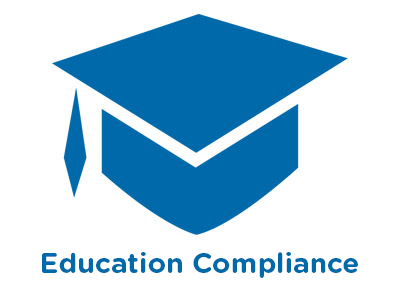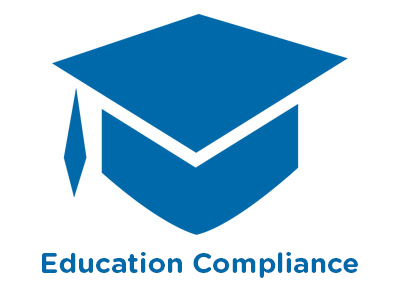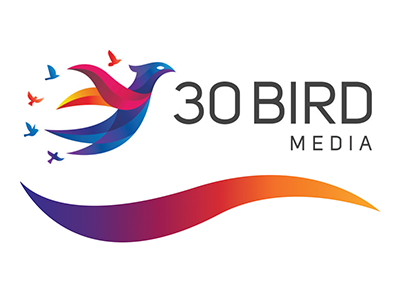 |
Exploring Four Areas of School-Age Development: Cognitive Development |
0.50 |
One of the most helpful ways to gain an understanding of the needs and interests of youth between 5 and 12 is to examine their development from four different perspectives: 1) Physical Development, 2) Cognitive Development, 3) Social Development, and 4) Emotional Development. In this course, we will explore the cognitive development perspective. |
 |
Exploring Four Areas of School-Age Development: Emotional Development |
0.50 |
One of the most helpful ways to gain an understanding of the needs and interests of youth between 5 and 12 is to examine their development from four different perspectives: 1) Physical Development, 2) Cognitive Development, 3) Social Development, and 4) Emotional Development. In this course, we will explore the emotional development perspective. |
 |
Exploring Four Areas of School-Age Development: Physical Development |
0.50 |
One of the most helpful ways to gain an understanding of the needs and interests of youth between 5 and 12 is to examine their development from four different perspectives: 1) Physical Development, 2) Cognitive Development, 3) Social Development, and 4) Emotional Development. In this course, we will explore the physical development perspective. |
 |
Exploring Four Areas of School-Age Development: Social Development |
0.50 |
One of the most helpful ways to gain an understanding of the needs and interests of youth between 5 and 12 is to examine their development from four different perspectives: 1) Physical Development, 2) Cognitive Development, 3) Social Development, and 4) Emotional Development. In this course, we will explore the social development perspective. |
 |
Exploring Individual Differences in School-Age Children: Implications for Programming |
2.00 |
One of the most significant challenges for staff in school-age programs is learning how to identify, manage, and respond appropriately to individual differences in a group setting. Some differences among children are the result of inborn characteristics and traits (e.g., physical characteristics, temperament, talents, race). Other differences are the result of external factors (e.g., the environment) or are cultivated as the child grows and develops (e.g., interests, skills, knowledge). The diverse needs, characteristics, interests, abilities, and skills of school-age children require a flexible atmosphere that supports diversity and choice for children with varying capacities for independent action. Staff who understand and appreciate individual differences in children are better equipped to plan and implement program experiences that help individual children grow and flourish in a group setting. |
 |
Exploring Taxonomy and Systematics |
1.00 |
In this course, you will learn about the history of taxonomy and the key contributors to its development, as well as taxonomy’s applications in animal management and conservation.
|
 |
Exploring the Continuum of Developmental Tasks of Children in Grades K-6 for Paraprofessionals |
1.00 |
Understanding the continuum of ongoing development during the school age years provides the foundation for planning and implementing successful strategies and ideas as a paraprofessional. When staff know and understand the developmental tasks of students in Kindergarten through 6th grade, they can work with colleagues to design effective environments, plan engaging activities, set appropriate expectations and limits, and guide children’s behavior effectively. Training all staff members on the foundations of child development, no matter their role in the school, is a vital part of student success. |
 |
Exploring the Continuum of Developmental Tasks of School-Age Children from 5 to 12 |
2.00 |
Understanding the continuum of ongoing development between the ages of 5 and 12 provides the foundation for planning and implementing successful school-age programs. When staff know and understand the developmental tasks of school-age children, they can work with children and colleagues to design effective environments, plan engaging activities, set appropriate expectations and limits, and guide children’s behavior effectively. |
 |
Export Control in Higher Education |
1.00 |
Colleges and universities are at the cutting edge of research in strategic technologies, microsystems engineering, astrophysics and imaging, and computing and information systems, among other fields. Our government controls the export of sensitive equipment, software, and technology as a way to protect our national security interests, and promote our foreign policy objectives. Export control describes the regulatory system in place to do so. |
 |
Exterior Fire Operations #1433 (Instructor Guide) |
1.00 |
This is the Instructor Guide for Lesson #1433 Exterior Fire Operations. This Instructor Guide is intended to prepare a lead instructor to deliver this course curriculum. Included in this guide is a review of lesson content and all required lesson materials. The lead instructor must pass this instructor guide course with a minimum score of 80% to receive the course materials for this lesson. |
 |
Falls in Construction |
1.50 |
This course is in English. We also have a version of this course in Spanish. In this course, you will watch videos on various types of falls that can occur while working in construction. You will learn about floor openings, fixed scaffolds, bridge decking, reroofing, skylights, and leading-edge work. |
 |
Family Educational Rights and Privacy Act (FERPA) for K-12 Institutions |
1.00 |
Welcome to the Family Educational Rights and Privacy Act (FERPA) for K-12 Institutions.
In this course, you will:
Identify what FERPA is.
Explore how educational records can be disclosed, accessed, and amended under FERPA guidelines.
Become familiar with the privacy and accountability goals that FERPA promotes.
Discover the characteristics of personally identifiable information (PII).
Clarify our expectations for enforcing FERPA violations. |
 |
Family Educational Rights and Privacy Act (FERPA) Training |
1.00 |
The Family Educational Rights and Privacy Act, often referred to as FERPA, is a federal statute that provides students with control over the disclosure of and access to their educational records. FERPA applies to all educational records maintained by institutions that receive federal funding. This extends to grades, disciplinary actions, and other school information directly related to a particular student that FERPA has designated as worthy of privacy protection.
In this course, you will:
Identify what FERPA is.
Explore how educational records can be disclosed, accessed, and amended under FERPA guidelines.
Become familiar with the privacy and accountability goals that FERPA promotes.
Discover the characteristics of personally identifiable information (PII).
Clarify our expectations for enforcing FERPA violations.
|
 |
Family-Teacher Relationships (CDA 4) |
2.00 |
How do you view the families of the children in your classroom? If you were to generate a list of words to describe families, what kinds of positive and negative feelings would they convey?
When we see ourselves as partners with the families we serve, the quality of care and nurturing children receive is greatly enhanced. Establishing such partnerships and building relationships is our responsibility. Communication strategies, such as practicing active listening, are key to this process. In this course, participants will describe the importance and benefits of establishing meaningful relationships with families and identify strategies for establishing meaningful relationships.
This course is designed to be part of a Child Development Associate (CDA) Credential™ curriculum. It covers CDA Subject Area 4: Strategies to Establish Productive Relationships with Families. This course can also be taken as a stand-alone learning event, or as part of a broader early childhood education curriculum. |
 |
Federal Risk Management Framework (RMF) Implementation 2022 |
24.00 |
Federal Risk Management Framework (RMF) Implementation 2022 focuses on the Risk Management Framework prescribed by NIST Standards. This course is current as of February 2022. It was revised due to NIST producing new and updated publications over the preceding two years, including NIST Special Publication (SP) 800-37, R2; SP-800-53, R5; SP 800-160, versions 1 and 2; and SP 800-171, R1 (among others). |
 |
Financial Management - Advanced: Analysis of Financial Statements |
0.50 |
This course covers how to identify the concepts and tools for analyzing financial statements. You will also learn how to analyze a Balance Sheet by using liquidity, activity, and leverage ratios. |
 |
Financial Management - Advanced: Analysis of Income Statements |
0.75 |
This course covers how to analyze an Income Statement by using profitability ratios, and compute profit by using the break-even point. You will also learn how to understand comparative and percentage analyses of an Income Statement. |
 |
Financial Management - Advanced: Application of Accounting Methods |
0.75 |
This course covers how to calculate inventory by using inventory costing methods. You will also learn how to calculate depreciation by using depreciation methods. |
 |
Financial Management - Advanced: Cash Management |
0.75 |
This course will cover how to dentify the fundamentals of cash and the importance of cash control as well as how to identify and prepare a bank reconciliation statement. You will also learn how to identify a business’s cash requirements and the methods of controlling and recording cash. |
 |
Financial Management - Advanced: Inventory and Depreciation |
0.75 |
This course covers how to identify inventory, fixed assets, and depreciation as well as how to identify and change inventory costing methods. You will also learn how to understand the depreciation process and the depreciation methods for an organization’s assets. |
 |
Financial Management - Basic: Accounting Cycle |
1.00 |
This course will cover how to analyze and post transactions, balance a General Ledger, and identify the cash and accrual bases of accounting. You will also learn how to identify the phases of the accounting cycle and the types of accounting records and identify the concept and method of Trial Balance preparation. |
 |
Financial Management - Basic: Balance Sheet |
0.50 |
This course will cover how to identify and prepare a Balance Sheet. You will also learn how to identify and calculate the liquidity and the debt-to-total-assets ratio. |
 |
Financial Management - Basic: Basics of Accounting |
0.75 |
This course will focus on how to define accounting and identify the key accounting terms. |
 |
Financial Management - Basic: Budgeting |
1.00 |
This course will cover how to identify the importance and process of budgeting and analyze financial statements by using ratio analysis and the break-even point. You will also learn how to set objectives and identify common budgeting problems and monitor performance by using a “pro forma” financial statement. |
 |
Financial Management - Basic: Income Statement |
0.75 |
This course will cover how to identify the key terms of an Income Statement. You will also learn how to create and interpret an Income Statement. |


























